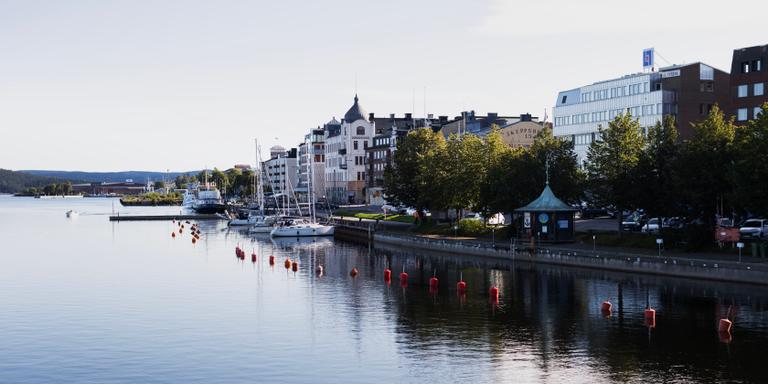


Härnösand, a Swedish town in real estate turmoil
FeatureIn 2007, the town sold almost all of its property portfolio, 43 public buildings, to a private company. Today, it is faced with a record rent increase, which is putting a strain on its budget.
The logo is impossible to miss. Circled in white on a red background, the three letters SBB are everywhere, at the entrances to Härnösand's public buildings. This is the emblem of Samhällsbyggnadsbolaget, Sweden's market leader in public real estate. It seemed unstoppable just two years ago. But then inflation returned and interest rates soared. Over-indebted, the company, which owns over 700 public buildings in Sweden, is now on the verge of bankruptcy.
In Härnösand, the Social Democrat mayor, Anders Sjölander, was searching for information, which was arriving in dribs and drabs. In November 2022, he discovered in the newspapers that premises in his municipality – including numerous schools, retirement homes and nursing homes – were now owned by a company called EduCo, controlled 51% by SBB and 49% by Canadian asset manager Brookfield. In June, the two groups began negotiations for a possible buyout of SBB's shares by Brookfield. On July 21, a press release announced that these had failed.

Since then, it has all been a blur. Sjölander arranged a meeting at the town hall, a pompous building with fuchsia-pink facades and white columns, inaugurated in 1791, in the center of Härnösand. The mayor has been inundated with interview requests. After all, Härnösand is the municipality in Sweden that leases the most buildings from SBB: Properties that used to belong to SBB, which it sold for almost 900 million kronor in 2007 (around €90 million today).
Raising funds
At the time, its finances were in the red. Härnösand was suffering from the same ills as most municipalities in northern Sweden: Its factories were closing, young people were leaving and not returning, and its population was aging. Härnösand received help from the government's emergency municipal aid program, designed to support local authorities heavily in debt following the financial crisis that wiped out the Swedish economy in the early 1990s, but this was not enough.
The center-right majority in power at the time soon ran out of ideas, all the more so as it had to quickly find funds to finance municipal employees' pensions. An idea came to mind: Why not sell off part of its real estate portfolio to raise fresh cash? On September 18, 2007, the sale was finalized: Härnösand sold 43 premises to the Kungsleden company, from which it leased them back for around 100 million crowns a year.
Kungsleden was created by the state in 1994 to get rid of the bad real estate debts of Bank Göta, one of the two financial institutions that had suffered most from the bursting of the real estate bubble between 1991 and 1992, and had been nationalized. Three years later, the bank was privatized and changed direction. The aim was no longer to sell properties, but to buy them and then lease them back to the previous owners: municipalities or regions, and sometimes even the state. The risks seem minimal: Tenants were reliable and their solvency guaranteed, contracts ran for years and the return on investment was around 8%.
You have 68% of this article left to read. The rest is for subscribers only.
